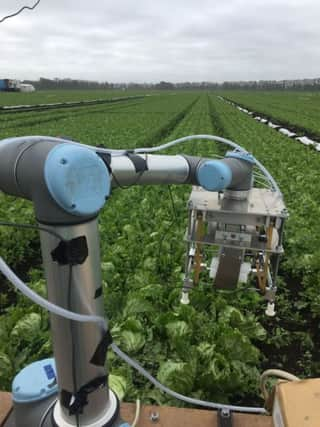Engineers develop ‘vegebot’ to assist in lettuce cutting


The prototype Vegebot, developed by a team at Cambridge University, is nowhere near as fast or efficient as a human worker at picking iceberg lettuces.
But research published in the Journal of Field Robotics suggests progress in harvesting the easily-damaged lettuces, which grow relatively flat to the ground, shows the use of robotics in agriculture could be expanded in future.
Advertisement
Hide AdAdvertisement
Hide AdCrops such as potatoes and wheat have been harvested mechanically at scale for decades, but iceberg lettuce, the most common type of lettuce grown in the UK, has resisted automation.
The Vegebot was initially trained to recognise and harvest iceberg lettuces in a lab setting and it has now been successfully tested in a variety of field conditions in co-operation with a Cambridgeshire grower.
“Every field is different, every lettuce is different,” said co-author Simon Birrell, from Cambridge’s Department of Engineering.
“But if we can make a robotic harvester work with iceberg lettuce, we could also make it work with many other crops.”
The Vegebot first identifies the target crop within its field of vision, then determines whether a particular lettuce is healthy and ready to be harvested. Finally, it cuts the lettuce from the rest of the plant without crushing it so that it is “supermarket-ready”.
Co-author Josie Hughes said: “For a human, the entire process takes a couple of seconds, but it’s a really challenging problem for a robot.”
The Vegebot has two main components: a computer vision system and a cutting system. The overhead camera on the Vegebot takes an image of the lettuce field and first identifies all the lettuces in the image, and then, for each lettuce, classifies whether it should be harvested or not.
A lettuce might be rejected because it is not yet mature, or it might have a disease that could spread to other lettuces in the harvest.
Advertisement
Hide AdAdvertisement
Hide AdThe researchers developed and trained a machine-learning algorithm on example images of lettuces.
Once the Vegebot could recognise healthy lettuces in the lab, it was then trained in the field, in a variety of weather conditions, on thousands of real lettuces.
A second camera on the Vegebot is positioned near the cutting blade, and helps ensure a smooth cut.